By Michele Levandoski, SSND Archivist
The practice of women religious receiving a new name started as early as the sixth century. “The idea springs from God changing Abram’s name to Abraham to signify the covenant between them (Genesis 17:3-9). A religious name signifies the adoption of a new life; the replacement of family identity with a religious one.”[1]
Naming customs varied between religious congregations. Some congregations allowed a woman to choose her name while in other cases someone in authority chose the name. For the School Sisters of Notre Dame (SSND), initially a woman’s religious name was chosen by the provincial or the commissary general, with no input from the woman herself. Later, the process changed and postulants were allowed to submit three names to the provincial. In most instances, one of the names from the list would be chosen, but there was no guarantee that a woman would get one of the suggested names.
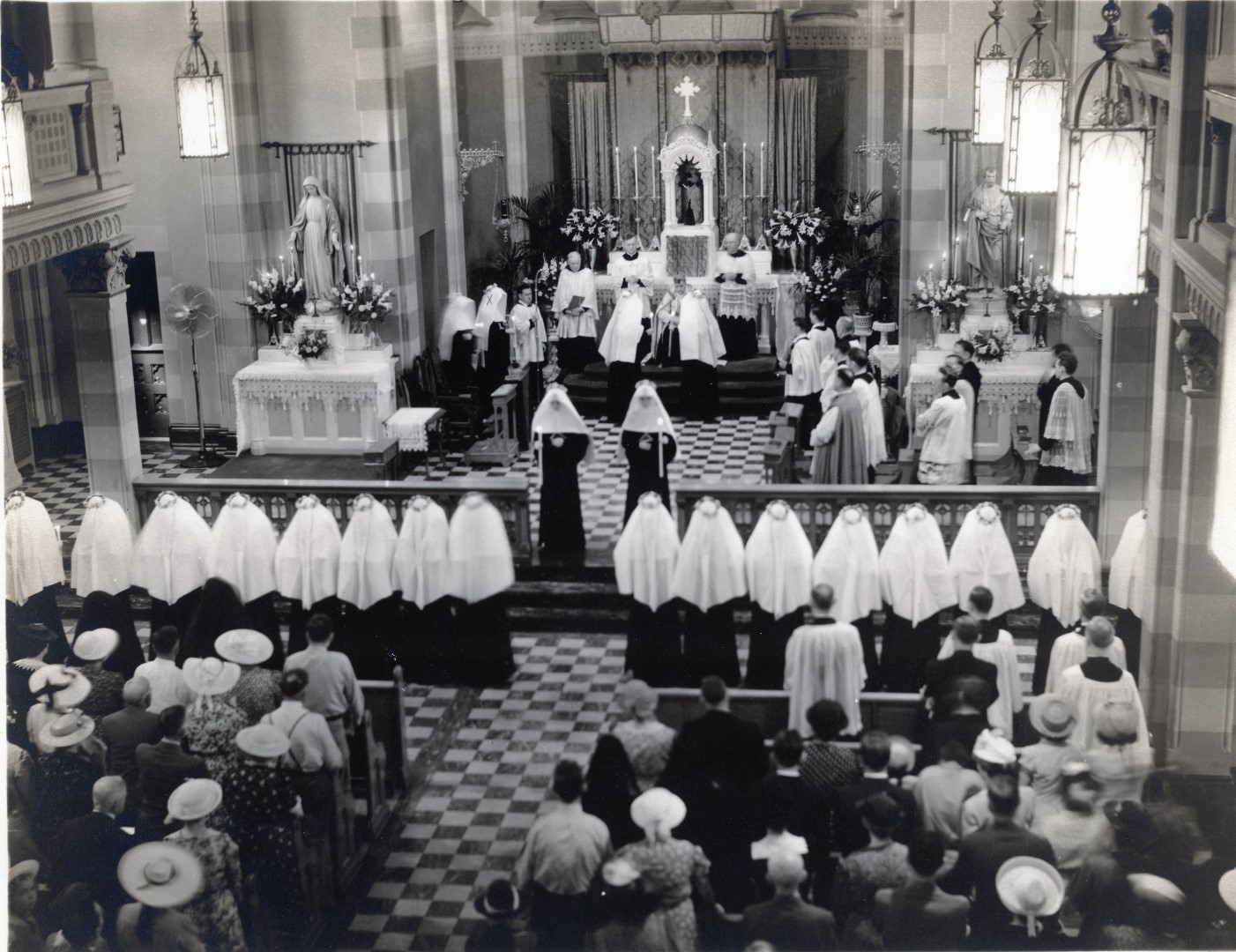
Reception ceremony at Sancta Maria in Ripa, St. Louis, 1941. During the ceremony when a candidate was received into the novitiate, she also received her religious name.
A postulant would learn her religious name before the closing prayer of the ceremony of her reception into the novitiate. The celebrant, ordinarily a bishop, would give each new novice her name saying, for example: “Catherine, henceforth you will be called Sister Mary Louise. Strive to bear this name in a worthy manner.”
Last names were only used for legal or administrative purposes, so each novice was given a unique religious name. Her religious name could not be given to another novice in the same province during her lifetime. By 1965, there were eight provinces in North America. While a name could not be repeated within a province, it could be repeated in other provinces. For example, the former Milwaukee Province could have only one Sister Mary Matthew, but there could also be a Sister Mary Matthew in the former Baltimore, Canadian and St. Louis Provinces, all living at the same time.
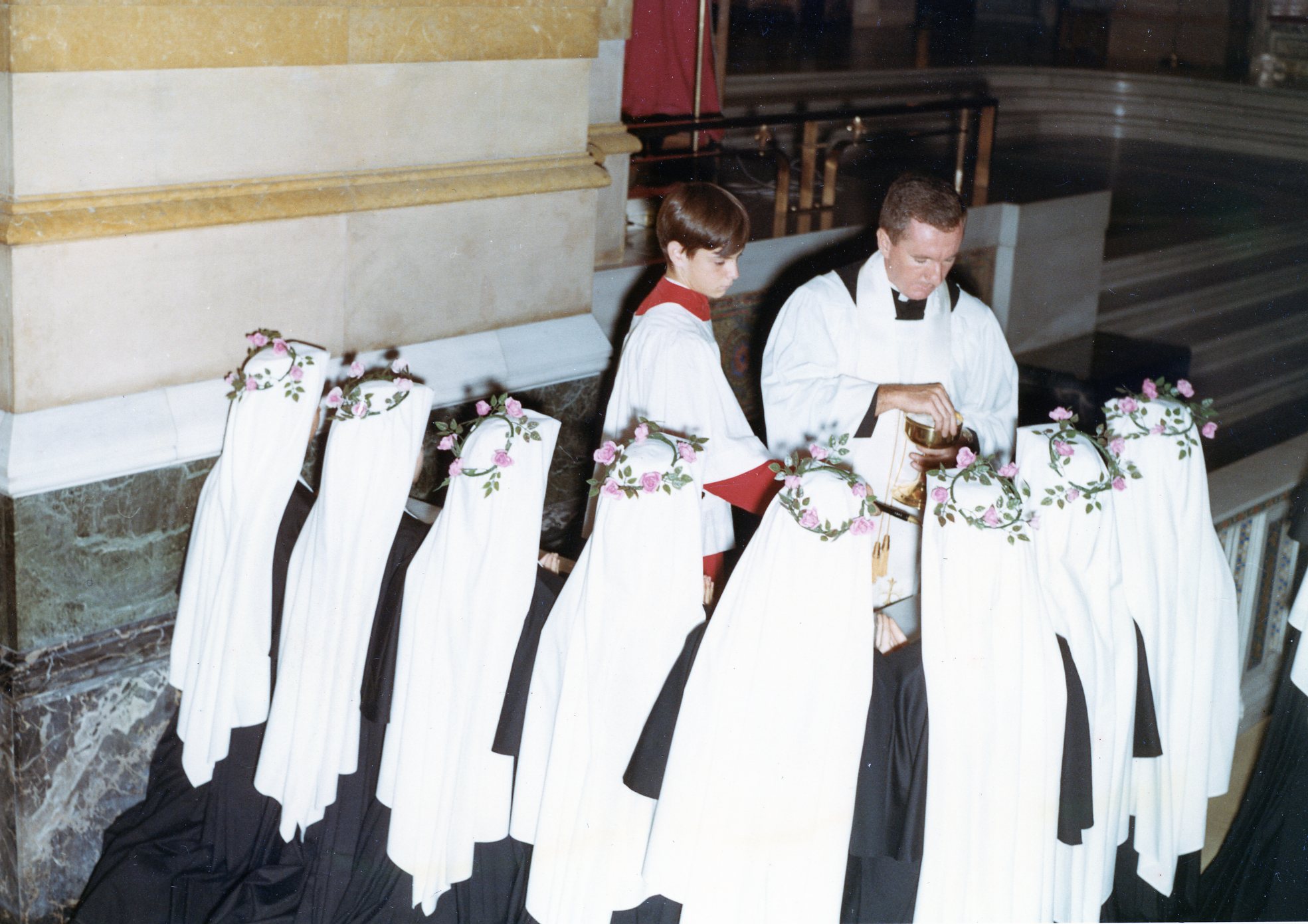
Reception ceremony at Sancta Maria in Ripa, St. Louis, 1966.
With as many as 2,100 Sisters in one province at one time, creativity was needed when religious names were chosen. There were various sources for names, including saints, titles of Mary, the Bible, Latin words and family names. Within each of the categories, variants of a particular name could be used to create more names.
After Vatican II and beginning in 1969, Sisters were allowed to return to their baptismal names. Today, a novice may choose to either keep her baptismal name or take a new religious name. This article speaks of practices carried out before 1969.
Please note: all the names referenced in this article were actually used by at least one SSND.
Mary
It was common practice for congregations named after the Blessed Virgin Mary, Mother of God, to include the name Mary as part of a religious name. This is the case for the School Sisters of Notre Dame since Notre Dame is French for Our Lady, a title used for Mary. The congregation originated in Germany, so when the Sisters first settled in North America, they used Maria instead of Mary. After World War I, the congregation in North America began using English as their primary language and Maria was changed to Mary. In later years, a Sister could choose to use another variation of Mary as part of her name, such as Marie, Maureen or Miriam.
Saint names
In the early days of the congregation, it seems that most of the novices received the names of saints, often those who were also martyrs. Sisters could receive a saint’s name that is easily recognized by the modern eye, such as Isabella, Catherine, Francis, Elizabeth or Anthony. Other Sisters, however, were named after saints from the first through eighth centuries whose names are not as well recognized (or as easily pronounceable). Some examples include: Gorgonia, Darerca, Eubula, Mustiola, Smaragda, Mildgitha, Paphnutia and Hormisdas.
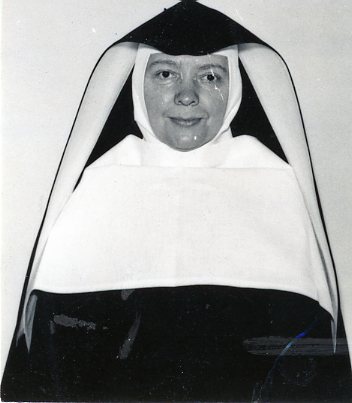
Sister Jerome Kuszewski’s original religious name was Hieronyma, which is the Latin form of Jerome. She later Anglicized it to Jerome.
Creativity was also evident when alternative forms of a saint’s name were used for religious names. In some instances, a masculine name would be feminized – Valentine would become Valentina or Joseph could be changed to Josepha or Josephine. In other instances, a saint’s name could be duplicated by using the English and Latin form of the name, such as Jerome and Hieronyma. Additional letters could also be added to a known name to create new forms of the name. Thomas could be used again as Thomasia, Thomasina, Thomasita, Thomasella, Thomasa or Thomasetta.
Sisters were sometimes given a saint’s full name to differentiate them from other saints with the same name. For example, a novice could receive the name: John Evangelista, John Vianney, John Cantius, John de Britto or John Nepomucene. A saint’s full name could also be broken down into parts to be used by multiple Sisters, so one Sister might be named Sister Gerard Majella, but another simply Sister Majella.
A good example of the ways a name could be recreated are the various forms of Theo. There are many saints that have Theo in their names, including St. Theophilus, St. Theodoric, St. Theodore and St. Theodosia, to name a few. These names could then serve as a basis for a wide range of religious names, including: Theotista, Theopista, Theodista, Theodolinda, Theonilla, Theota, Theodoretta, Theona, Theodomira and Theodulpha.
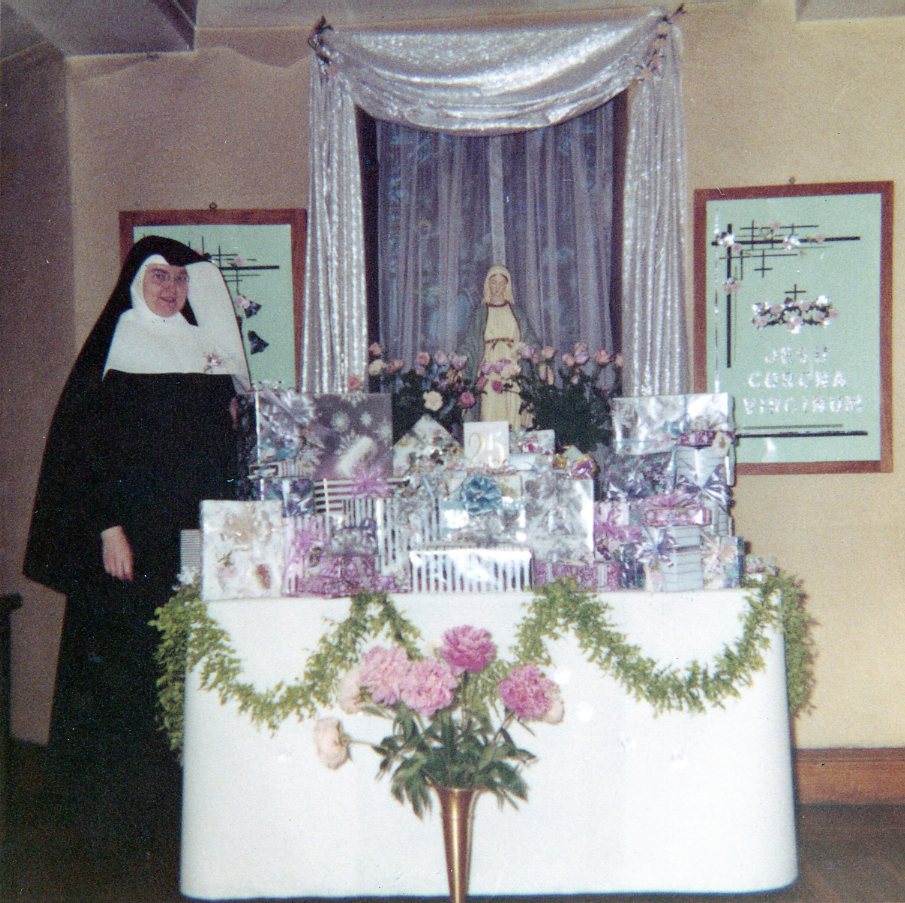
The inspiration for Sr. Mary Austin Austin’s religious name is pretty clear – her own last name!
Matching names were sometimes given to biological sisters who entered the congregation. Cecilia and Clara Dahm were given alternate forms of their father’s name – Cecilia became Sister Edward and Clara became Sister Edwardine. Twin sisters Louise and Marie Diebels were named after Saints Cosmas and Damien, who are believed to have been twins. In several instances, a woman’s last name served as the inspiration for her religious name, as was the case with Sisters Mary Colman Coleman, Mary Austin Austin and Mary Gilbert Gilbert.
The Bartscher sisters provide a good example of the way one name could be reconfigured to accommodate multiple Sisters. In 1858, Josepha, Dorothy and Elizabeth Bartscher, along with their parents and brother, traveled up the Mississippi River on the steamer, Pennsylvania. Mother Caroline Friess and Fr. Anton Urbanek, the Milwaukee Motherhouse chaplain, were also on board.
Early in the morning on June 13, the ship’s boiler exploded killing a large number of people on the steamer, including the girls’ parents and brother. Mother Caroline took pity on the girls and sent them to the Sisters working at the orphanage in New Orleans. All three women entered the congregation and, because the explosion occurred on the Feast of St. Anthony, Mother Caroline gave them religious names that honored their protector, St. Anthony of Padua. Josepha became Sister Antonia; Dorothy became Sister Anthony de Padua and Elizabeth became Sister Antonilla.
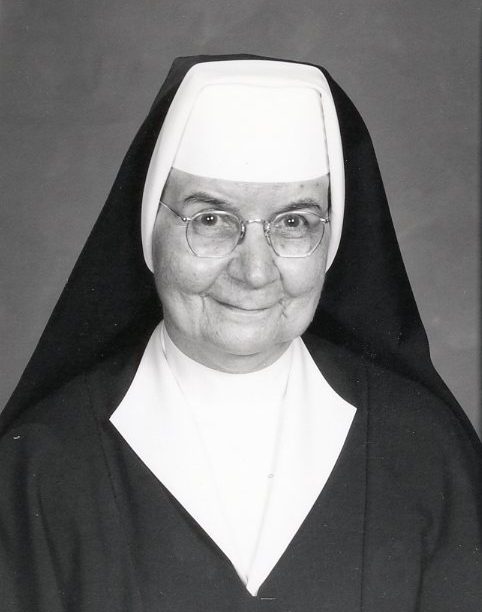
Sister Jadwiga Ferek, who was born in Poland, was named in honor of the 14th century Polish saint.
Ethnic names
The congregation originated in Germany, so many of the early names reflect that heritage. A novice might receive the name of a German saint or a saint revered in German-speaking lands, such as Wolfsindis, Benno, Alruna and Bilhildis.
When women from other ethnic groups began entering the congregation, they were often provided with names of saints who were revered in their country of origin. Polish women formed one of the largest ethnic groups to enter the congregation after Germans. Many of these women were named after Polish saints, such as: Sisters Jadwiga, Waclawa, Casimira, Hyacinth, Bronislava and Ladislaus. However, it was not only Polish Sisters that received the name of a saint from their heritage: Sister Wenceslaus Chinoraczki was born in Hungry and named after a Bohemian saint.
Another option for women of a particular ethnic group to receive a saint’s name already represented in the congregation was to use the form of the name commonly used in their country of original. Some examples include: Jose (Spanish for Joseph), Alzbeta (Slovak for Elizabeth), Matylde (Polish for Mathilda), Malgorzata (Polish for Margaret), Akwina (Polish for Thomas Aquinas) and Vojtecha (Slavic name for St. Adalbert of Prague).
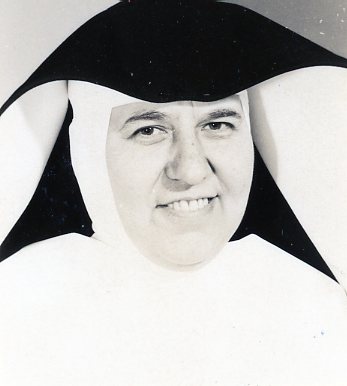
Sister Dolores Musial’s religious name was originally Dolorosa, which is a nod to the Marian title, “Mother of Sorrows.”
Marian titles
Since the School Sisters of Notre Dame are members of a congregation dedicated to the Blessed Mother, titles and epithets for Mary were often used as names for Sisters. Examples include: Madonna, Immaculata or Concepta (Immaculate Conception), Amabilis (Loving Mother), Dolorosa (Mother of Sorrows), Purissima (Most Pure), Maris Stella (Star of the Sea), Annunciata (Annunciation) and Della Strada (Our Lady of the Good Road or Our Lady of the Way).
Women entering the congregation from Puerto Rico (SSND had been on the island since 1915) were often given Spanish variants for Marian-inspired names, such as Socorro (Our Lady of Perpetual Succor or Our Lady of Perpetual Help), Mercedes (Our Lady of Mercy) and Milagros (Our Lady of Miracles).
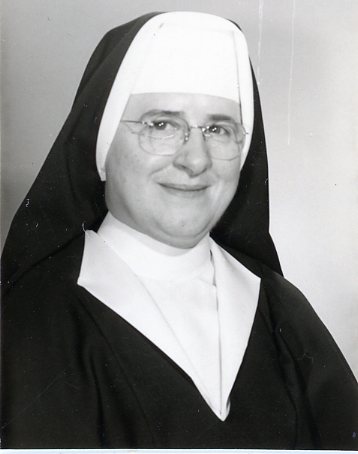
Sister Epiphania Myszka is named for the Epiphany.
Bible and Catholic doctrine
The Bible itself, was also a good source of religious names. Several Sisters were named after prominent women in the Bible, such as Magdalene, Susanna, Tabitha, Martha and Salome. A few Sisters received the names of men in the Bible, such as Gamaliel, David and Daniel. The archangels Michael, Gabriel, Raphael and Uriel were also used as names, as were the heavenly beings Cherubim and Seraphim.
Some names were inspired by Catholic doctrine and history, such as Trinitas (the Trinity), Epiphania (the Epiphany) or Nativity.
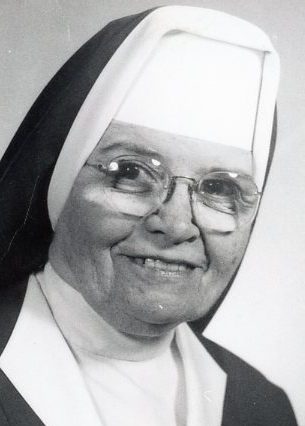
Sister Illuminata Allen’s religious name is derived from the Latin word meaning “enlightened.”
Latin words
Latin words that describe positive attributes for a woman religious were also used as names. There are quite a few examples for this, including Charitas (charity), Gratia (grace), Humilitas (humility), Vota (vows), Vita (life), Pieta (piety) and Illuminata (enlightened).
Family members
The members of a woman’s family could also serve as inspiration for her religious name. As mentioned earlier, a particular name could only be used by one Sister in a province and could not be used again until after her death. It was not uncommon for a Sister’s religious name to be given to a family member who entered the congregation after her death.
Sister Climaca Leimkuehler died of tuberculosis in 1878. When her biological sister Elizabeth was received into the novitiate two years later, she was also given the name Sister Climaca. In 1927, Sister Antonilde Hagenhoff died of tuberculosis and her biological sister, Anna Mary, was given the same religious name, Antonilde, when she entered the novitiate three years later. In a slightly different example, Sister Ivo Dick died in July 1917. The following month, her niece, Thecla, was received as a novice and was given the name Ivo in honor of her aunt.
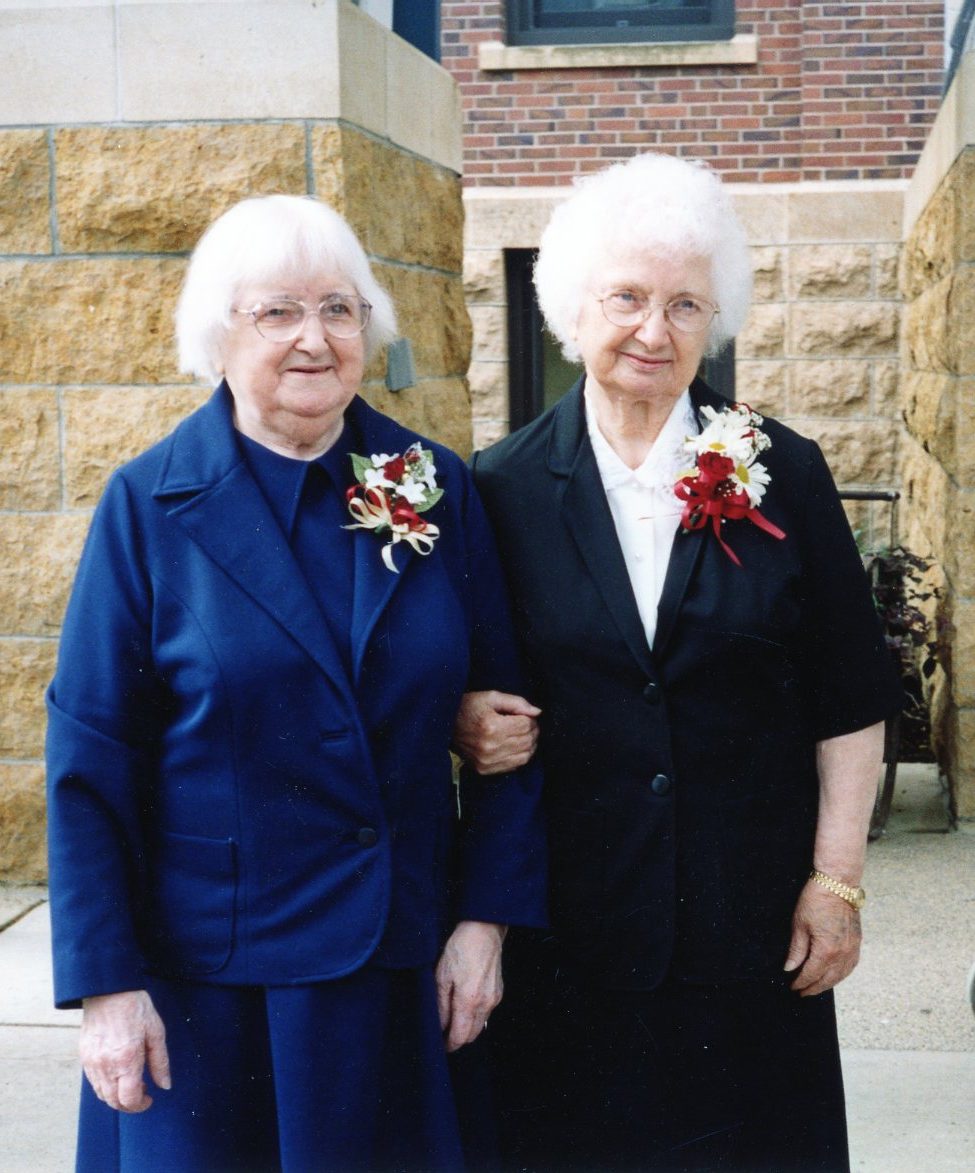
Sisters Christine and Barbara Mardian
The use of family names could lead to a lot of confusion. A good example is the three Mardian sisters, who were all received on the same day, July 14, 1933. Imagine everyone’s surprise when they learned that all of their names were inspired by each other! Margaret became Sister Barbara; Barbara became Sister Christine and Christine became Sister Marina (since there was already a Sister Margaret in the province).
A similar situation happened with the Nohava sisters, but in their case, each entered the novitiate in a different year and it appears that the two younger Sisters were named in honor of the sister that had entered before them. Lillian was the first to enter the novitiate in 1937 and was given the religious name, Sister Yvonne. Rose came next in 1939 and was named Sister Lillian and her twin, Mary, entered two years later and was named Sister Rosemary.
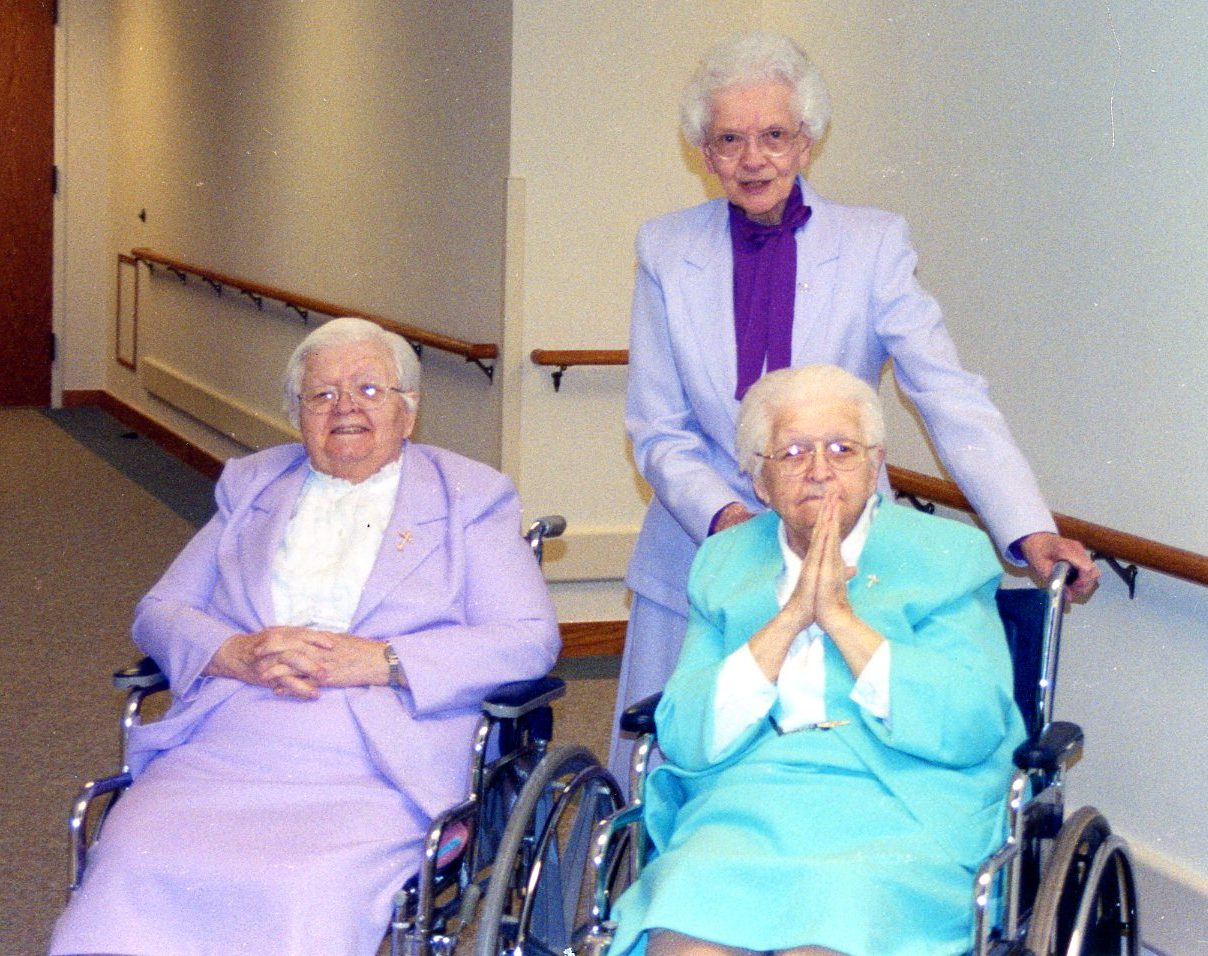
Sister Yvonne Nohava standing behind her biological sisters, Sister Rosemary and Sister Lillian.
Giving biological sisters each other’s baptismal names as religious names was fine prior to 1969. However, beginning in 1969 a Sister could choose to return to her baptismal name, which could lead to confusion. For example, Margaret Therese Joyce was received into the novitiate on August 10, 1945 and was given the name Sister Martinus. A year later, her twin sister, Mary Jane, was received and she either chose or was given the name Sister Margaret Therese. When Sister Martinus was preparing for her silver Jubilee (25th anniversary of first vows) trip to Rome, she applied for her passport using her baptismal name, Margaret Therese. The following year, her twin sister, preparing for the same trip, applied for a passport using her religious name, Margaret Therese. She received a message from the state department that she already had a passport. That prompted her to return to her baptismal name, Jane. Her sister later officially reverted back to her baptismal name as well.
Other
In most cases, it is possible to figure out the inspiration for a Sisters’ name, but not always. In some cases, the inspiration for the name is not known, such as for Sisters Nobilis, Jamblica or Rhodiana.
In a few instances, a name only makes sense if you know the story behind it. At least two SSND combined their parents’ names to create their religious names: Leo and Armella were combined to create Lemelle and Frank and Cecile were combed to make Francele.
According to lore, Margaret Hergott was the last of the 98 postulants being received into the novitiate in 1878. Because of the large number of postulants, there were two reception ceremonies held on two consecutive days in extremely hot weather. When Margaret knelt before the celebrant, he sighed, “Deo Gratis” (Latin for “thanks be to God”) and that became her religious name. This story cannot be confirmed, but there is no denying the fact that Margaret’s religious name was Sister Deo Gratis so it makes for a great story!
The daughters of George and Mary (Marx) Hackenmueller are probably the best example of most of these naming conventions. The couple gave seven daughters to the congregation and their names reflect many of the naming patterns described. The two oldest daughters, twins, were given the names Sisters Gudelia (saint) and Jacunda (Latin for congenial). Next came Sister Lybia (unknown origin), Sister Balthasara (feminine form of Balthasar), Sister Gudelia (in honor of her older sister who died in 1886) and Sister Johanna de Britto (feminine form of John de Britto). When the seventh daughter entered in the novitiate in 1888, it was clear that Mother Caroline decided to have a little fun. The young woman was given the religious name Septima, which is Latin for seven!
It could not have been easy to come up with religious names for SSND, but it is clear that a variety of sources were used as inspiration.
[1] Marvels of Charity: A History of American Sisters and Nuns, 1727-1990 by George C. Stewart Jr.
AUDIO FILES: Click the name of a SSND listed below to hear the story behind her religious name.
Sister Frances Angermaier
Sister Laurentilla Back
Sister Virginia Brien
Sister Paul Mary Draxler
Sister Carla Huebner
Sister Bridget O’Reilly
Sister Mary Faith Parkinson (Correction to audio: Sister Mary Faith entered the candidature in 1945, not 1947.)
Sister Gilda Sturino
